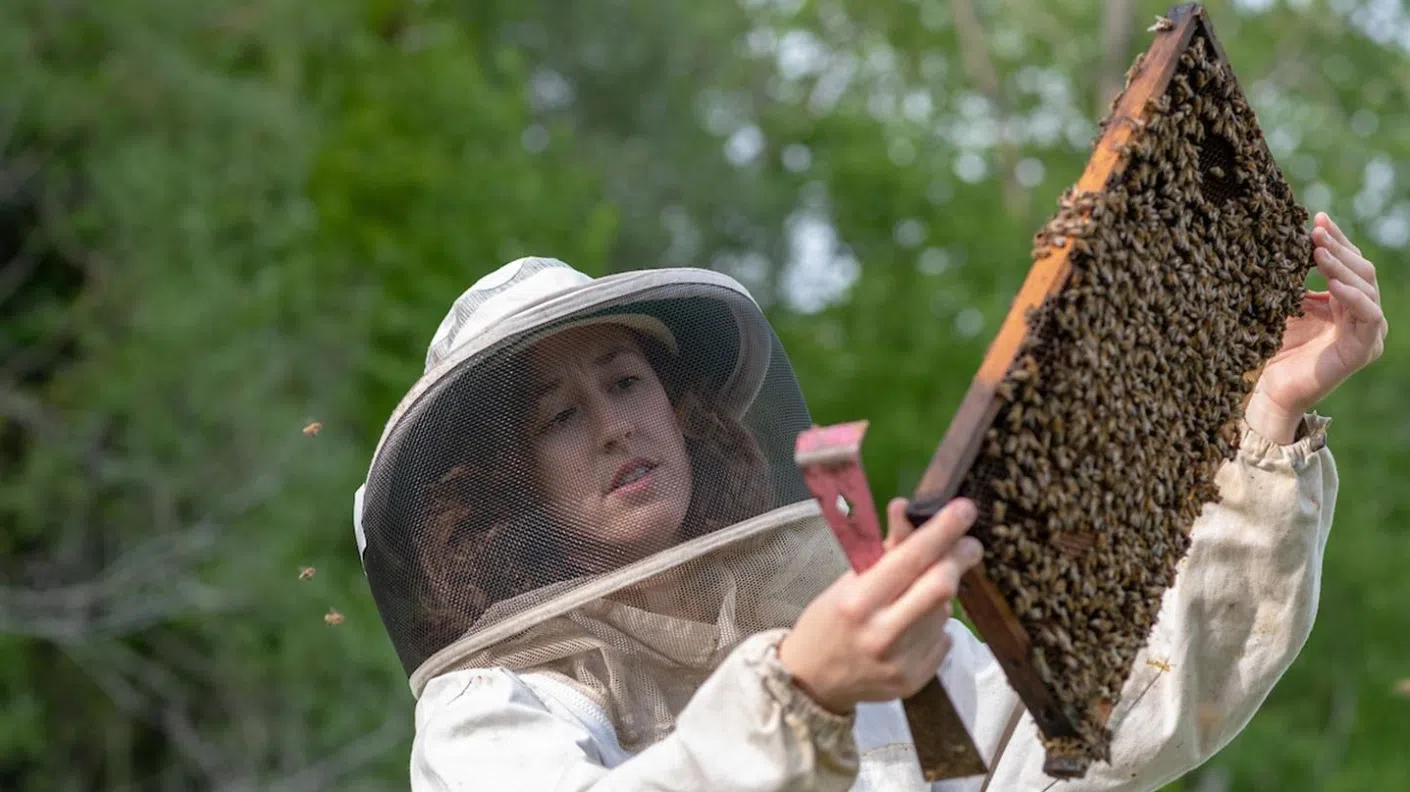Beekeepers in the United States lost more than 55 percent of managed colonies last year—the highest loss rate since the Apiary Inspectors of America began determining them in 2011. A new study from University of Vermont scientists and international collaborators supports a novel method for testing hygienic behavior in honey bees that could promote breeding more disease resistant colonies in the future.
“Beekeepers are losing bees at a rate that they say is unsustainable,” says Samantha Alger, director of the Vermont Bee Lab at the UVM and lead author of the study. “In the ‘80s, beekeepers lost colonies 10-12 percent of the time … but now it’s like 30-50 percent. Imagine that happening to someone who’s a cattle farmer or a pig farmer every year.”
Honey bee populations remain relatively steady despite heavy losses because beekeepers are good at breeding new bees, she explains.
But that comes at the expense of time and resources for beekeepers, as well as risk for native pollinators. Pathogens in managed honey bees can spill over into wild bee populations. Alger’s lab works with beekeepers to breed hardy, disease resistant honey bee colonies which they can sell to hobbyists and professional beekeepers. Helping beekeepers identify hygienic behavior—the ability to identify unhealthy brood— is part of this process.
“It’s definitely more desirable for a beekeeper to have bees that are better adapted at taking care of their diseases themselves rather than using chemical treatments and interventions to try to reduce these pathogen loads, which of course may have negative impacts on the bees,” says Alger, a research assistant professor in UVM’s College of Agriculture and Life Sciences. “Now the trick is how does a beekeeper identify a colony that is really hygienic? And there’s various tests that you can perform for that and this UBeeO is sort of a novel way of testing for it.”
Alger’s team recently studied a screening tool developed by scientists at the University of North Carolina at Greensboro that tests colonies for hygienic behavior by mimicking the pheromones emitted by sick or dying bees. The researchers found the UBeeO test can identify colonies resistant to several pests and pathogens that can decimate bee populations such as Vairimorpha (known to many beekeepers as Nosema) and fungal infections including chalkbrood. They published their findings today in Frontiers in Bee Science.
“UBeeO has been known to identify colonies that are able to better resist Varroa mites, but it had not been used to look at other pest or pathogens,” Alger says. “We found this new assay could be used to identify colonies that are resistant to these other stressors.”
UVM Strategic Communications





Comments